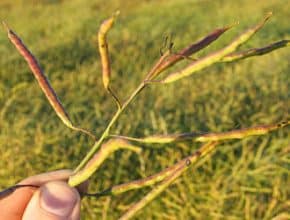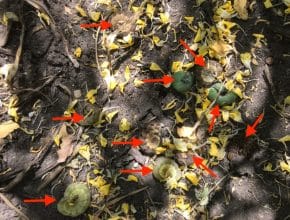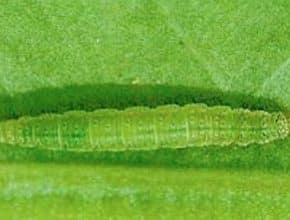Home / Canola Watch / Page 50
-
Canola growers who straight cut or wait for 60 per cent seed colour change on the main stem to swath can potentially maximize both yield and quality…
-
Growers and agronomists can use the Keep it Clean Spray to Swath Interval Calculator at spraytoswath.ca to plan pre-harvest spraying…
-
Through the pod filling time between flowering and harvest, growers and agronomists will want to take time for a more intense session of clubroot scouting. But what are you looking for? This quiz will help train your eye…
-
Vigilantly scout all canola fields for symptoms, even if growing a clubroot resistant (CR) variety. Clubroot galls can start to form about three weeks after emergence, but typically it takes about six to eight weeks for visible galls to form in fields. So galls – if present – will be visible by this stage of the season…
-
Even if an area is low risk according to provincial risk maps, local hot spots can flare up – which is why each farm should make its own assessment on a field by field basis…
-
Diamondback moth larvae are generally low across the Prairies so far, but one hot spot has been noted in Rural Municipality 10 in Saskatchewan. This R.M. is south of Regina, near the U.S. border. Some populations of diamondback moth above the economic threshold have also been found in Eastern Manitoba recently…
-
Not really. If infection got started, then this fungus is in the plant. When conditions are ideal (relative humidity over 80 per cent and temperatures of 20°C to 25°C) then pathogen grows aggressively eating up more tissue. When conditions are not ideal, the disease slows…waiting, patiently…
-
A lot of canola companies and organizations are opting for virtual tours this year. If you have a virtual tour you’d like added to this list, please email Jay Whetter at whetterj@canolacouncil.org…
-
While out scouting for insects feeding on pods, you might also find these insects at work. Each of the insects in the quiz will feed on pest insects of canola, which is why we call them "beneficials". You might also call them Field Heroes…



